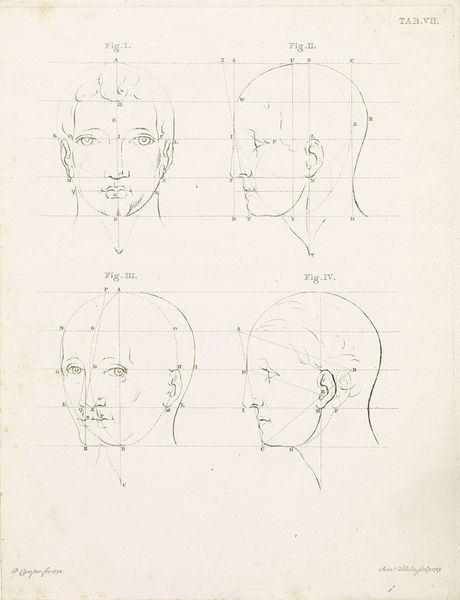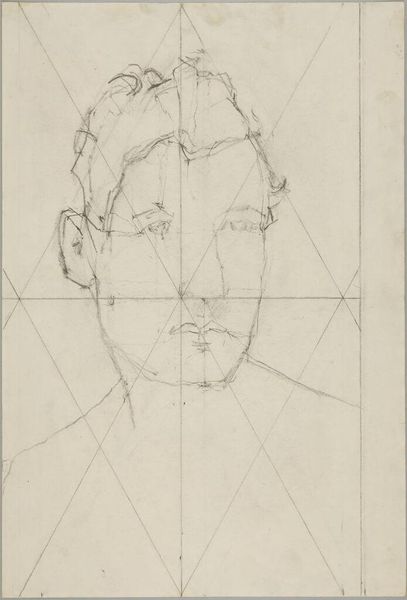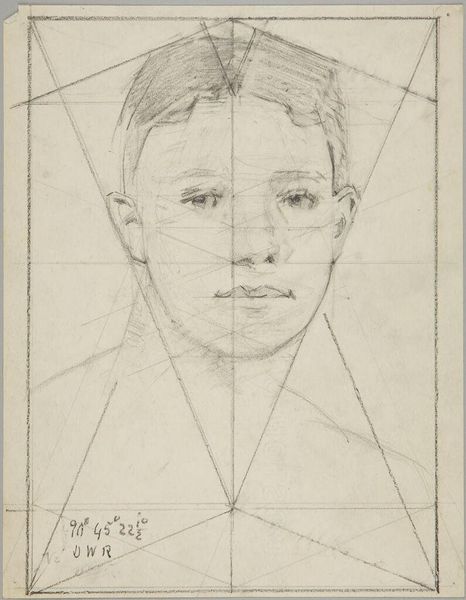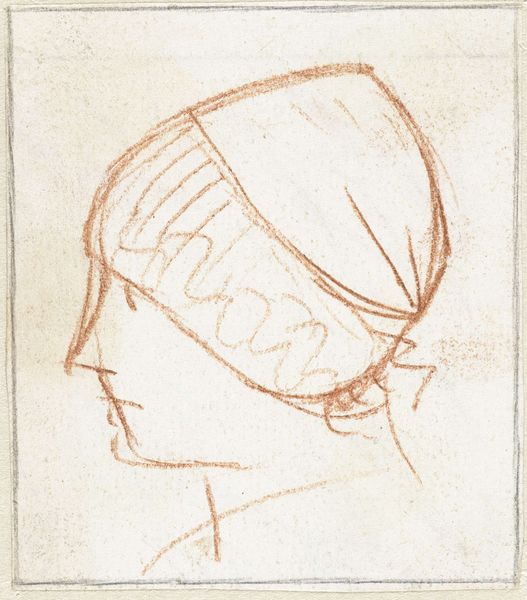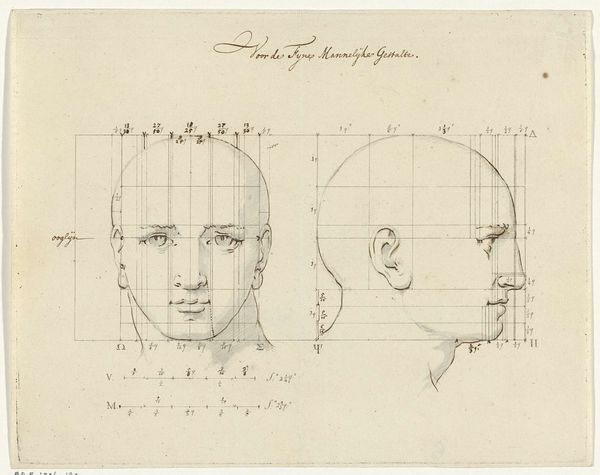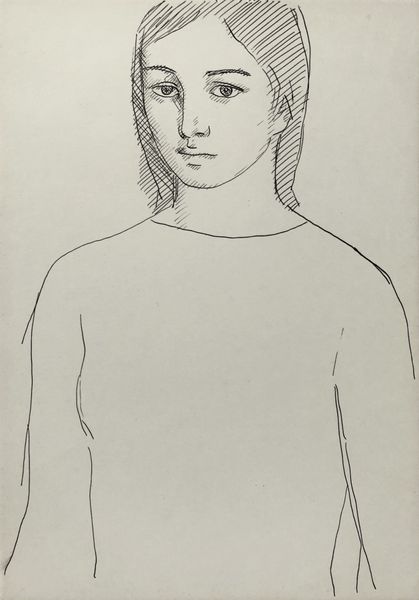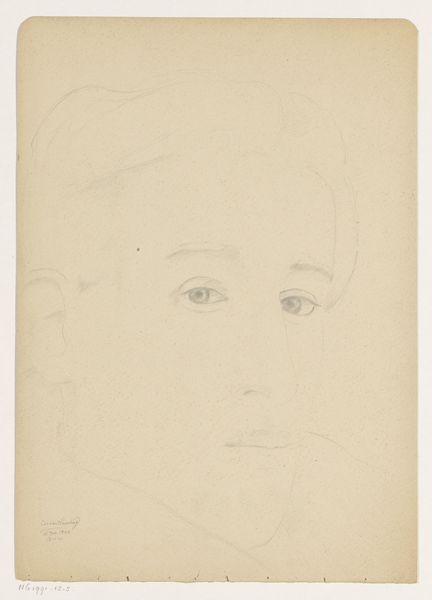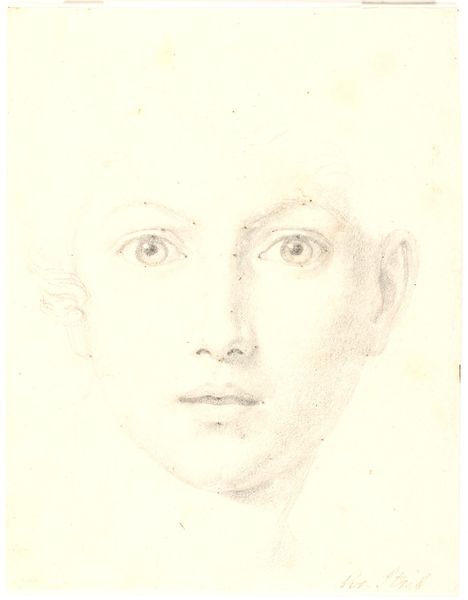
drawing, pencil
#
portrait
#
drawing
#
11_renaissance
#
pencil drawing
#
geometric
#
pencil
#
academic-art
Dimensions: height 269 cm, width 179 cm
Copyright: Rijks Museum: Open Domain
Curator: I am struck by the quiet stillness of this work. "Manshoofd," or "Head of a Man," rendered anonymously sometime between 1700 and 1800 using pencil. The artist employed a geometric framework, as if mapping the very architecture of the human face. Editor: It's austere, clinical almost. Seeing this grid overlaid feels like viewing a person not as an individual, but as a site of measurement. I immediately think about Lavater’s pseudo-scientific physiognomy, reducing individuals to sets of predictable characteristics based on facial features. Curator: Precisely! The artist is engaging in a long lineage of academic practice, attempting to distill form to its most fundamental components, almost like a classical ideal. The delicate hatching and soft rendering create volume but also reinforce a sense of constraint. Editor: I wonder who this person was. What were their hopes and dreams, their social standing? Erasing their particularity to achieve an "ideal" erases so much cultural information. How does the use of this academic style impact perceptions of race and gender in portraying individuals at this time? Curator: You make an important point. Focusing on idealized form certainly abstracts lived reality. But consider how the grid itself signifies an era grappling with reason and scientific rationalization. The lines are precise, immutable, dictating the contours. Editor: It reveals anxieties and strategies related to control of knowledge during this historical moment. Even within the visual balance and restrained approach of the "Manshoofd" that echoes ancient canons, the portrait inadvertently reminds us that knowledge itself can be a constructed force. Curator: It's a dance between universality and individual experience captured with remarkable deftness. The drawing, despite its age and possible intent, triggers timely concerns that resound today. Editor: Absolutely. The way form and sociohistorical pressures coalesce offers ample opportunity to discuss lasting ramifications—visual and conceptual.
Comments
No comments
Be the first to comment and join the conversation on the ultimate creative platform.
